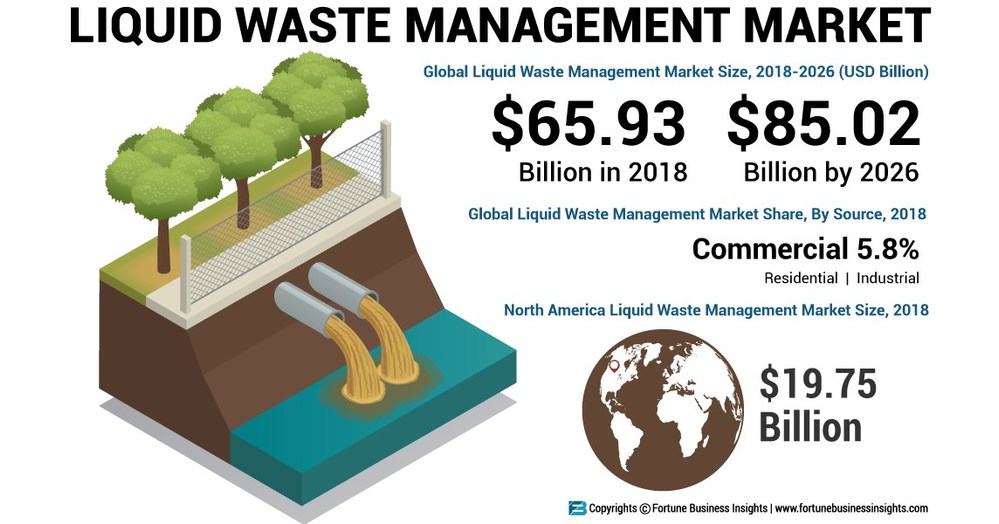What Does Reclaim Waste Do?
What Does Reclaim Waste Do?
Blog Article
Reclaim Waste - An Overview
Table of Contents3 Simple Techniques For Reclaim WasteThe Main Principles Of Reclaim Waste Not known Details About Reclaim Waste 6 Simple Techniques For Reclaim Waste10 Simple Techniques For Reclaim WasteHow Reclaim Waste can Save You Time, Stress, and Money.

Never put harmful substances down sinks, commodes or stormwater drains pipes Materials consisting of fuel, grease, oil, chemicals and herbicides, and solvents such as paint strippers ought to not be put down sinks, bathrooms or stormwater drains. These compounds are tough to eliminate in the sewer therapy process and trigger contamination troubles in our regional rivers.

Although liquid waste is a term that covers a wide selection of materials, there's an excellent reason that leaving its disposal to the professionals is suggested. Fluid waste is non-solid product that has no further use and should be dealt with and taken care of according to neighborhood, state and government guidelines.
The Basic Principles Of Reclaim Waste
Although examples of fluid waste can consist of wastewater, fats, oils or grease, used oil, liquids, solids, gases or sludges and unsafe home fluids, there are some that are taken into consideration to be extra dangerous than others when it comes to the setting and the wellness of animals and humans alike. It's consequently that each state and area have stringent laws connected to liquid waste administration.
Fluid waste can be saved in holding containers or packaged in drums, intermediate mass containers or accepted little containers prior to either being dealt with or eliminated by means of outsourced vacuum trucks. Given the nature of the products, fluid waste can not enter the basic waste stream and there are strict laws on how to deal with it properly.
(https://www.gaiaonline.com/profiles/reclaimwaste1/46907679/)Depending on a decision of the level of threat, it might be required to remediate those sites. Furthermore, harmful liquid chemical wastes are managed waste and should be tracked in conformity with the state waste legislation. Under the chain of custodianship and obligations, owners are accountable and liable for waste created by a service.
Among the core applications for superabsorbent polymers (SAPs) is liquid waste solidification. liquid waste removal. SAPs are utilized by waste administration professionals to avoid potentially harmful liquids from getting in waterways, groundwater aquifers, and various other sensitive atmospheres. Due to the fact that liquids can quickly carry pollutants right into environmental receptors and possibly add to geotechnical failures, fluid wastes are generally restricted from disposal in land fills
Reclaim Waste Things To Know Before You Get This
Generally, cost-free fluids are fluids that divide from the solid portion of waste material. Fluid waste can include the following: HDD mud and cuttings Garbage dump leachate Wastewater treatment sludge & biosolids Dug up debris Oil and gas drill cuttings Settling pond filth Hydro Excavation slurry Coal burning residuals/ash Tank base sludge Concrete grinding/polishing slurry Relevant Write-up: For a practical example of totally free fluids dividing from waste product, think about the adhering to situation: A waste monitoring specialist loads a dump truck with sludge from a wastewater treatment plant's oygenation basin, throughout a routine maintenance event.
When the driver gets here at the land fill, he notices water leaching from the sludge and pouring from the dump truck. The lots was turned down by the landfill and the motorist was required to throw away the waste as a liquid waste at an unique center, which enhanced the disposal costs enormously.
We likewise require to be accountable for the proper disposal of our waste materials. It is not enough that we pay waste disposal firms to take treatment of our rubbish.
The smart Trick of Reclaim Waste That Nobody is Discussing

Segregating your waste can start inside the home. Set apart completely dry and liquid waste as well as edible waste, naturally degradable and non-biodegradable products.
Layer the base with dirt to soak up the damp waste. Layer the garden compost with damp and completely dry waste as well as dirt to maintain a balance in between the damp and the completely dry.
The Best Guide To Reclaim Waste
To help with faster decay, you can additionally include semi composted dirt to the compost. If you observe the smell is becoming also solid, add added newspapers and paper waste or include more holes to the garden compost bin to keep the equilibrium of the waste products.
We likewise need to be liable for the appropriate disposal of our waste products. It is not enough that we pay waste disposal firms to take treatment of our rubbish.
Our waste, our responsibility. Have you ever before questioned what happens to your fluid waste after it's gathered? Did you recognize that fluid waste can be reused?
Examine This Report about Reclaim Waste
Segregating your waste can start inside the home. Set apart completely dry and fluid waste as well as edible waste, eco-friendly and non-biodegradable materials.
You can utilize old garbage container, container, garden pot or old plastic drums. Drill four to five holes in the container so the air can flow. Layer the base with dirt to take in the wet waste. Begin the composting process. Layer the compost with damp and dry waste in addition to soil to maintain an equilibrium in between the damp and the completely dry.
Cover the garden compost bin. Once a week, include dirt on top of the garden compost. To assist in faster decay, you can likewise add semi composted dirt to the compost. Maintain the compost. If you see the scent is ending up being too strong, include added papers and paper waste or add more openings to the garden compost bin to maintain the balance of the waste products.
Report this page